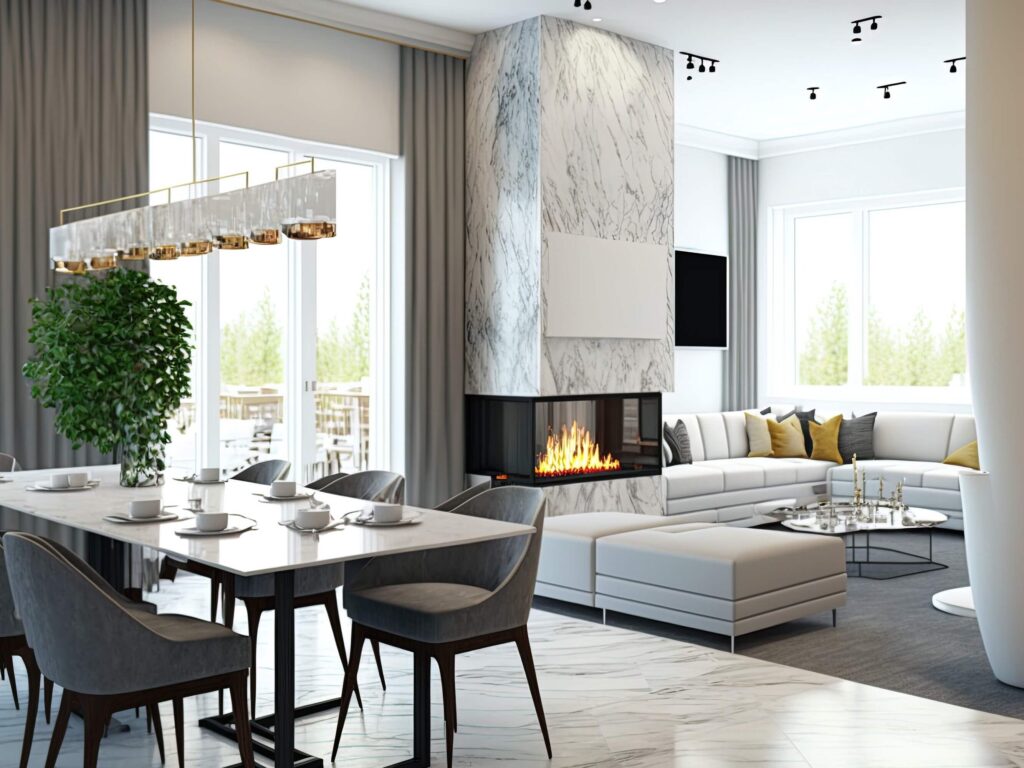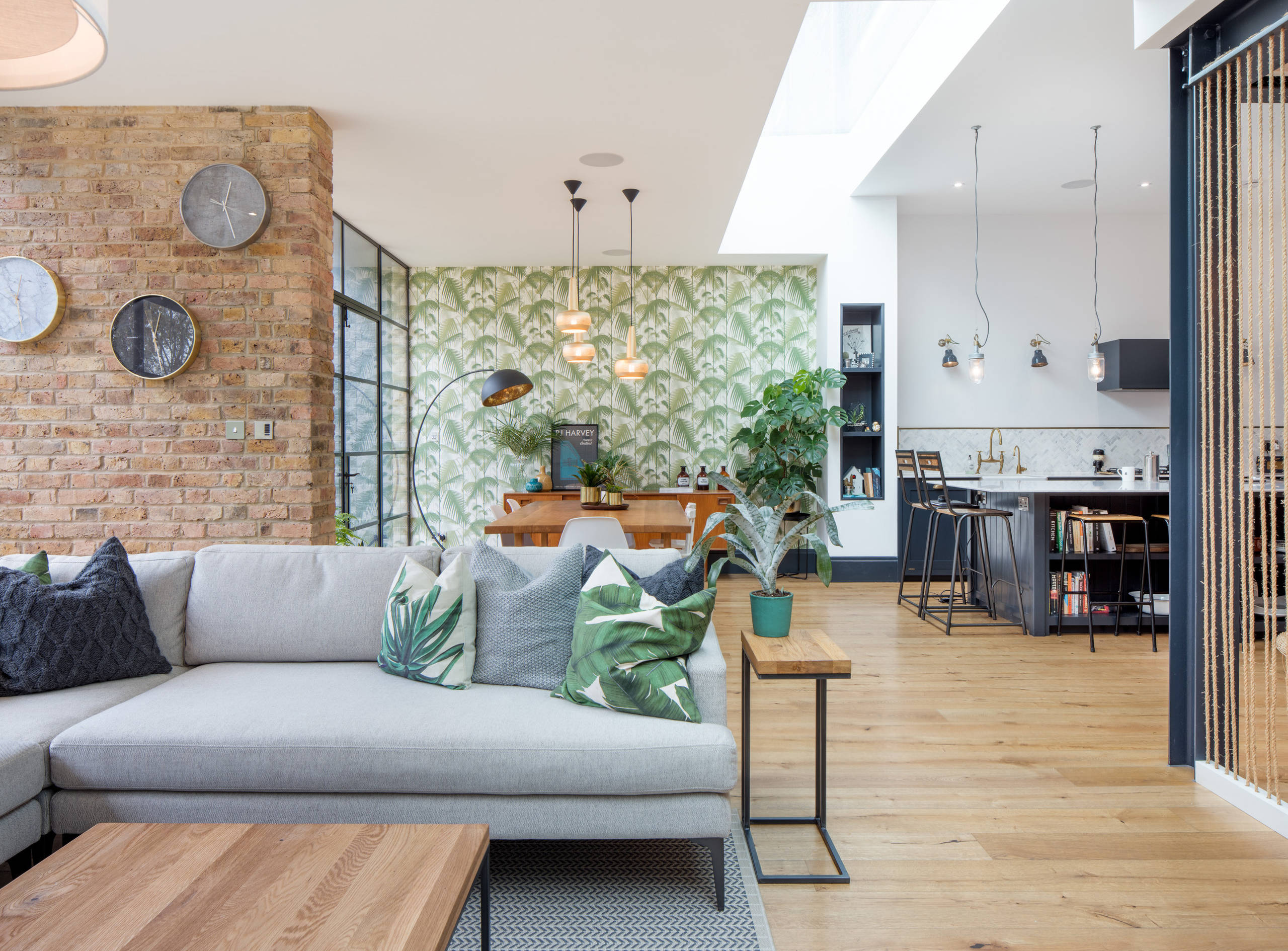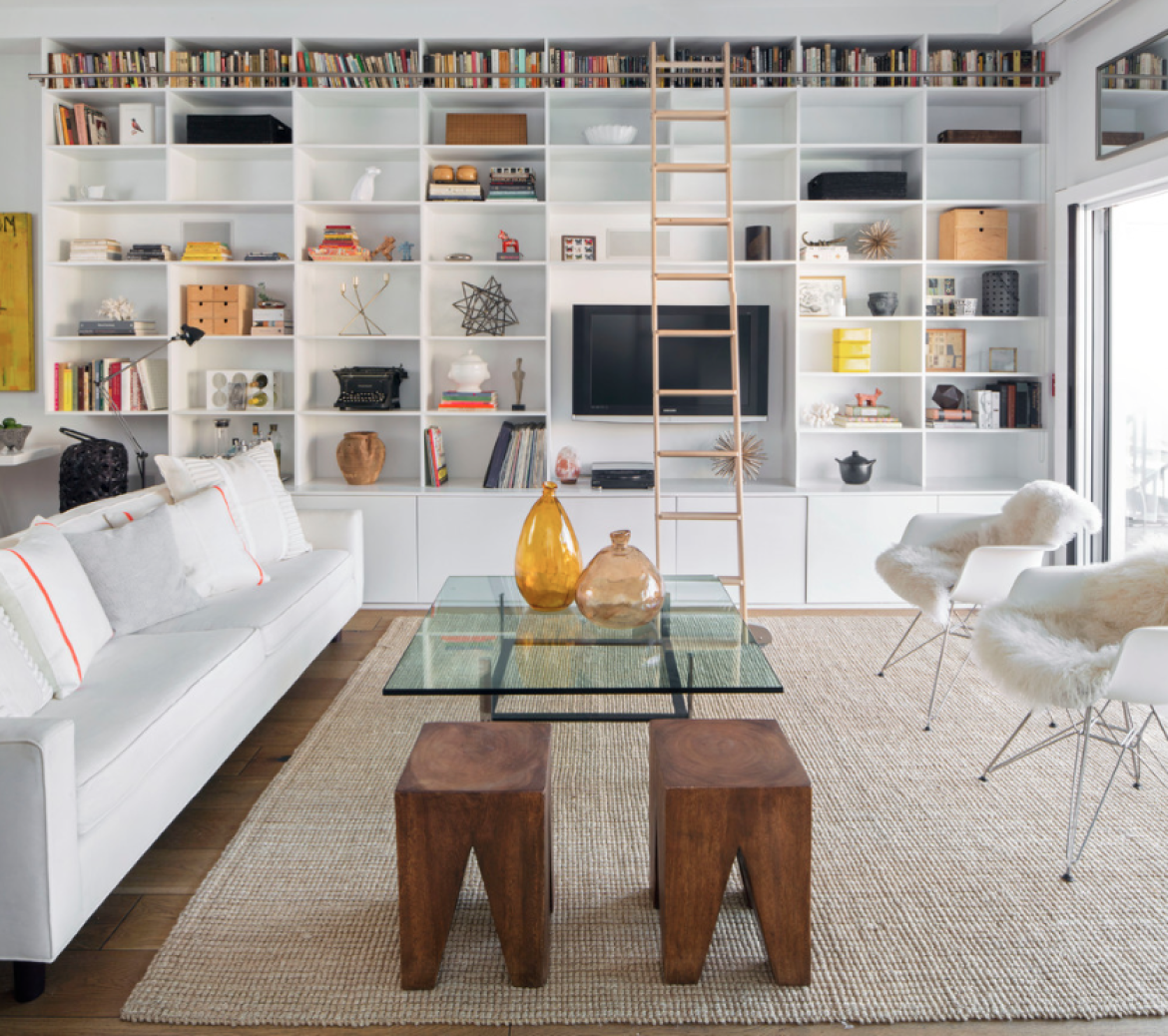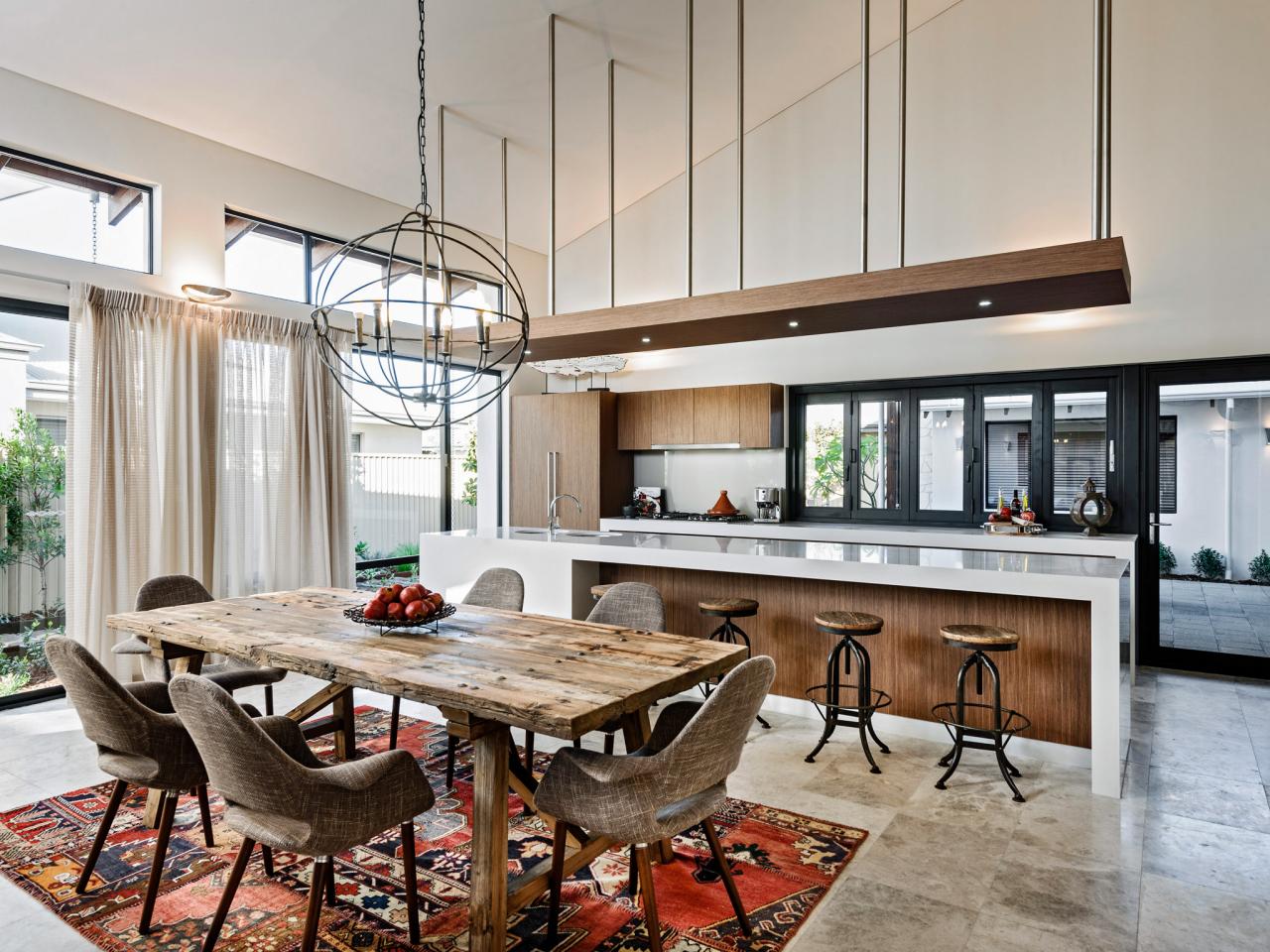Creating Harmony in an Open Space
Designing a seamless open-concept living space is all about creating harmony within the different areas of your home. An open floor plan offers a sense of spaciousness and flow, but it can also present challenges when it comes to creating a cohesive design. By following a few key tips and tricks, you can ensure that your open space feels harmonious and inviting.
One of the first steps in creating harmony in an open space is to establish a cohesive color palette. Choose a Color scheme that flows seamlessly from one area to the next, creating a sense of unity throughout the space. Consider using different shades of the same color or complementary colors to tie the different areas of your open-concept living space together.
In addition to a cohesive color palette, consider using similar materials and textures throughout the space. This will help to create a sense of continuity and flow, making the different areas of your home feel connected. For example, you could use the same flooring throughout the space, or incorporate similar wood finishes in your furniture and Cabinetry.
Another key element in creating harmony in an open space is to establish zones within the larger area. By defining different areas for specific functions, such as a living area, dining area, and kitchen, you can create a sense of organization and structure within your open-concept living space. Use furniture placement, area Rugs, or Lighting to delineate these zones and create a sense of purpose for each area.
:strip_icc()/pink-blue-open-concept-living-room-9a9fb413-85abea3632e84146bed7b8690b8cd16b.jpg)
Image Source: bhg.com
When it comes to furniture and Decor, be mindful of scale and proportion. In an open space, it’s important to choose furniture that is appropriately sized for the space and that complements the overall design. Avoid overcrowding the space with too much furniture, and opt for pieces that are streamlined and modern to create a cohesive look.
Lighting is another crucial element in creating harmony in an open space. Use a combination of natural and artificial lighting to illuminate different areas of your home and create a sense of ambiance. Consider incorporating Pendant lights or Recessed lighting to highlight specific areas, such as a dining table or kitchen island, and use floor Lamps or Sconces to create a warm and inviting atmosphere.
Finally, don’t forget to add personal touches and accents to your open-concept living space. Incorporate Artwork, accessories, and Plants to inject personality and style into the space. These finishing touches will help to make your open space feel warm and inviting, and will reflect your unique sense of design and taste.
By following these tips and tricks, you can create a harmonious and seamless open-concept living space that is both functional and stylish. With a cohesive color palette, consistent materials and textures, defined zones, appropriately scaled furniture, and thoughtfully chosen lighting and decor, you can design a space that feels inviting, organized, and effortlessly chic. Embrace the open-concept design trend and create a space that is perfect for relaxing, entertaining, and living your best life.
Creating a Seamless Open-Concept Living Space
With the rise of open-concept living spaces in modern homes, it’s essential to design a cohesive and harmonious environment that flows seamlessly from one area to the next. Open-concept living allows for a more connected and social atmosphere, but it also presents unique challenges when it comes to creating a cohesive design.

Image Source: lider-electric.com
In this article, we will explore some tips for achieving a cohesive open-concept design that brings together different areas of your home in a seamless and stylish way. From choosing the right color palette to selecting furniture that complements each other, these tips will help you create a unified and inviting living space that is perfect for entertaining guests or simply relaxing with your family.
Choosing a Color Palette
One of the most important aspects of designing a cohesive open-concept living space is choosing a color palette that ties the different areas of your home together. When selecting colors for your walls, furniture, and accessories, consider using a neutral base color that can be carried throughout the space. This will help create a sense of flow and continuity from one area to the next.
In addition to a neutral base color, consider adding pops of color in different areas of your home to create visual interest and personality. Choose accent colors that complement each other and add depth to your design. Whether it’s a bold Rug in the living room or colorful Throw pillows on the Sofa, these accents can help tie the different areas of your home together while adding a touch of personality.
Selecting Furniture
:strip_icc()/Open-concept-living-room-TWP0380-CV1hghhEaBBAkX_uv8K9cw-3313dfd39e2b42f5b37f43b8dfa14e08.jpg)
Image Source: bhg.com
When it comes to selecting furniture for an open-concept living space, it’s important to choose pieces that complement each other in style, scale, and color. Consider selecting furniture with similar design elements or materials to create a cohesive look throughout the space. For example, if you have a modern sofa in the living room, consider choosing a dining table with clean lines and a similar finish in the adjacent dining area.
In addition to coordinating styles, be mindful of the scale of your furniture pieces. In open-concept spaces, it’s important to maintain a sense of balance and proportion between different areas. Avoid overcrowding one area with oversized furniture while leaving another area feeling empty and underutilized. By carefully selecting furniture that fits the scale of each space, you can create a harmonious and inviting environment that is both functional and stylish.
Creating Zones
In open-concept living spaces, it’s important to create distinct zones for different activities while maintaining a sense of flow and connection between them. By delineating different areas for lounging, dining, and entertaining, you can create a more organized and functional space that feels cohesive and well-designed.
One way to create zones in an open-concept living space is to use Area rugs to define different areas. Placing a large rug under the seating area in the living room, for example, can help anchor the space and create a cozy gathering area. Similarly, using a rug under the dining table can help define the dining area and create a sense of separation from the rest of the space.

Image Source: squarespace-cdn.com
In addition to using rugs, consider using furniture and accessories to create visual barriers between different zones. A tall Bookcase or Room divider can help separate the living room from the dining area while maintaining an open and airy feel. By creating distinct zones within your open-concept living space, you can maximize functionality and create a sense of unity and coherence throughout the space.
Incorporating Lighting
Lighting plays a crucial role in creating a cohesive and inviting open-concept living space. By incorporating a mix of ambient, task, and Accent lighting, you can create a well-lit environment that enhances the overall design of your space. Consider using Ceiling lights, floor Lamps, and Table lamps to illuminate different areas of your home and create a warm and welcoming atmosphere.
In addition to artificial lighting, Natural light can also play a key role in enhancing the design of an open-concept living space. Consider using Window treatments that allow for maximum natural light while maintaining privacy and controlling glare. By maximizing natural light in your space, you can create a bright and airy environment that feels cohesive and inviting.
In conclusion, designing a seamless open-concept living space requires careful planning and attention to detail. By choosing a cohesive color palette, selecting furniture that complements each other, creating distinct zones, and incorporating lighting effectively, you can create a harmonious and inviting environment that is perfect for entertaining and relaxing. With these tips in mind, you can design a stylish and functional open-concept living space that reflects your personal style and enhances the overall flow and cohesion of your home.

Image Source: hzcdn.com
Creating an Open-Concept Living Room That Flows

Image Source: stelinedesign.com

Image Source: stelinedesign.com

Image Source: taliejaneinteriors.com

Image Source: sndimg.com

Image Source: amazonaws.com
:strip_icc()/pink-blue-open-concept-living-room-9a9fb413-85abea3632e84146bed7b8690b8cd16b.jpg?w=1200&resize=1200,0&ssl=1)